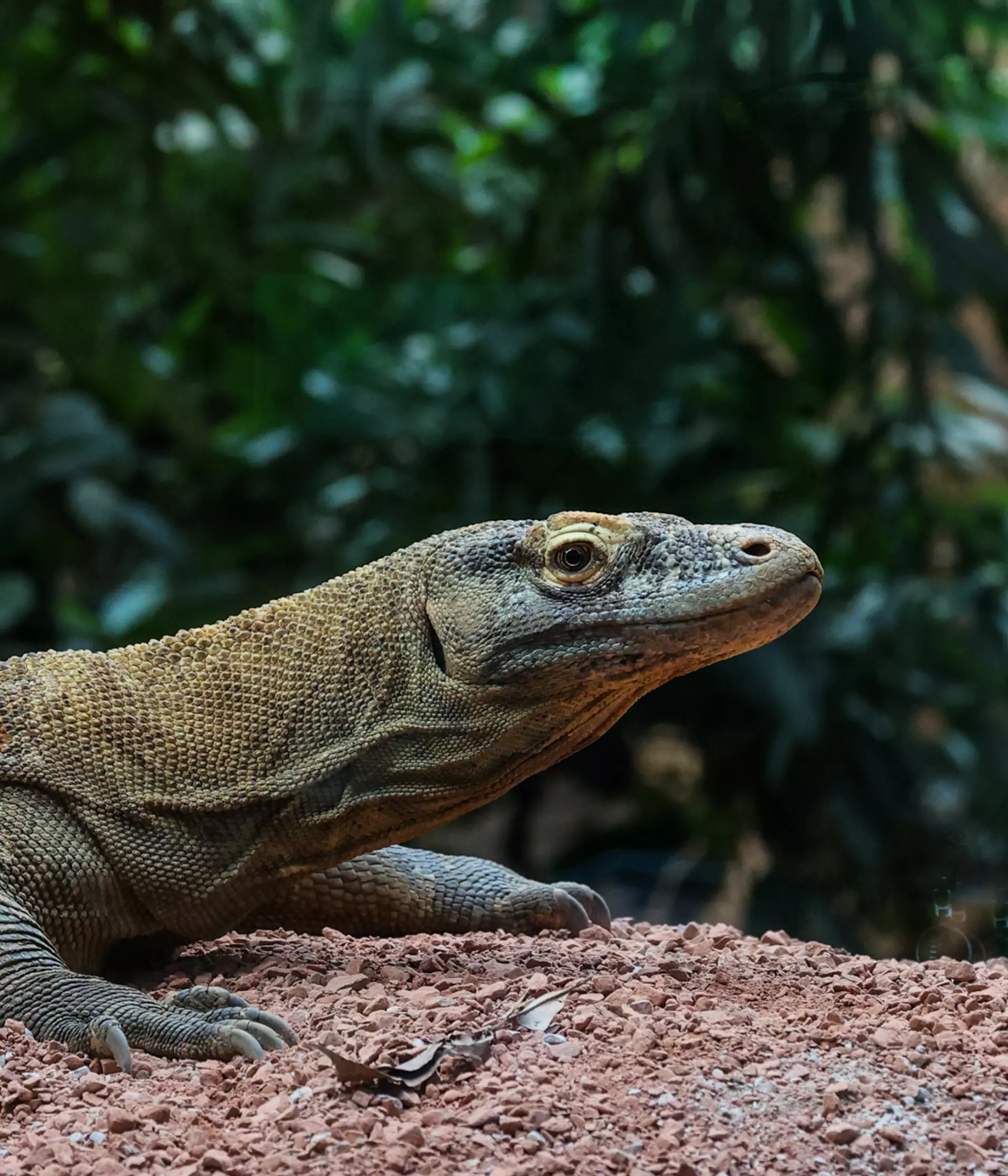Dragon Keeper, Joe Capon, explains what it's like to train and work with Khaleesi, the Komodo dragon - the world's largest lizard.
Reptile training
"She's really quite friendly." These might not be the words you'd expect someone to use about a Komodo dragon, but it's how Joe Capon, who has possibly the coolest job title at the Zoo (Lead Dragon Keeper!), describes Khaleesi, our Komodo dragon.
While other dragons will hiss or puff when you get too close, Khaleesi is very relaxed and very balanced in comparison. Keeper Joe has found Khaleesi to be a very different dragon, compared to Ganas, our previous Komodo Dragon.
"Male dragons like Ganas have an inherent swagger - a domineering behaviour that is intended to be a little intimidating. Khaleesi is super curious and alert, but she's also calm with me," says Joe.
Training a Komodo dragon
Bridging the divide with an animal so different to us, and learning to communicate, makes working with Komodo dragons especially rewarding.
Building trust with a Komodo dragon is a very gradual process over several months. Luckily they are a very food-motivated species, with a fast metabolism, so they want to eat all the time and we can use food as positive reinforcement.
The process of training a dragon begins with simply walking in their enclosure, three times a week, 15 minutes each time. Once Khaleesi is relaxed, we can begin recall training - which lets us call her into the inner den while we clean her enclosure.
Next, we move on to target training, which for her means coming to or following a coloured ball on a stick. Eventually, we introduce her to the crate and build her positive association with the crate, using food. The aim is for her to recognise the crate as a safe space.
The key to a dragon's heart isn't gold, it seems, it's patience - and plenty of treats!
Caring for a Komodo dragon
Keeping Khaleesi stimulated and challenged is a big part of Keeper Joe's work with her.
- Scent trails - Komodo dragons primarily hunt by smell, using scent receptors on their forked tongues to detect prey. Laying scent trails around the enclosure, using blood or animal fur, stimulates Khaleesi's predatory instincts.
- Rainfall - Indonesia, where Komodo dragons originate, experiences rainy season every year so we regularly stimulate a heavy rainfall in Khaleesi's habitat.
- Mealtime - Dragons are strict meat eaters which means they rely on the meat, bones and organs of their prey for minerals and vitamins. We regularly give Khaleesi a whole carcass, which she has to work hard to eat.
Join one of our experienced Komodo dragon keepers with the Komodo Dragon Experience at London Zoo, and head behind-the-scenes as they take you through their morning routine for a truly unique experience!
